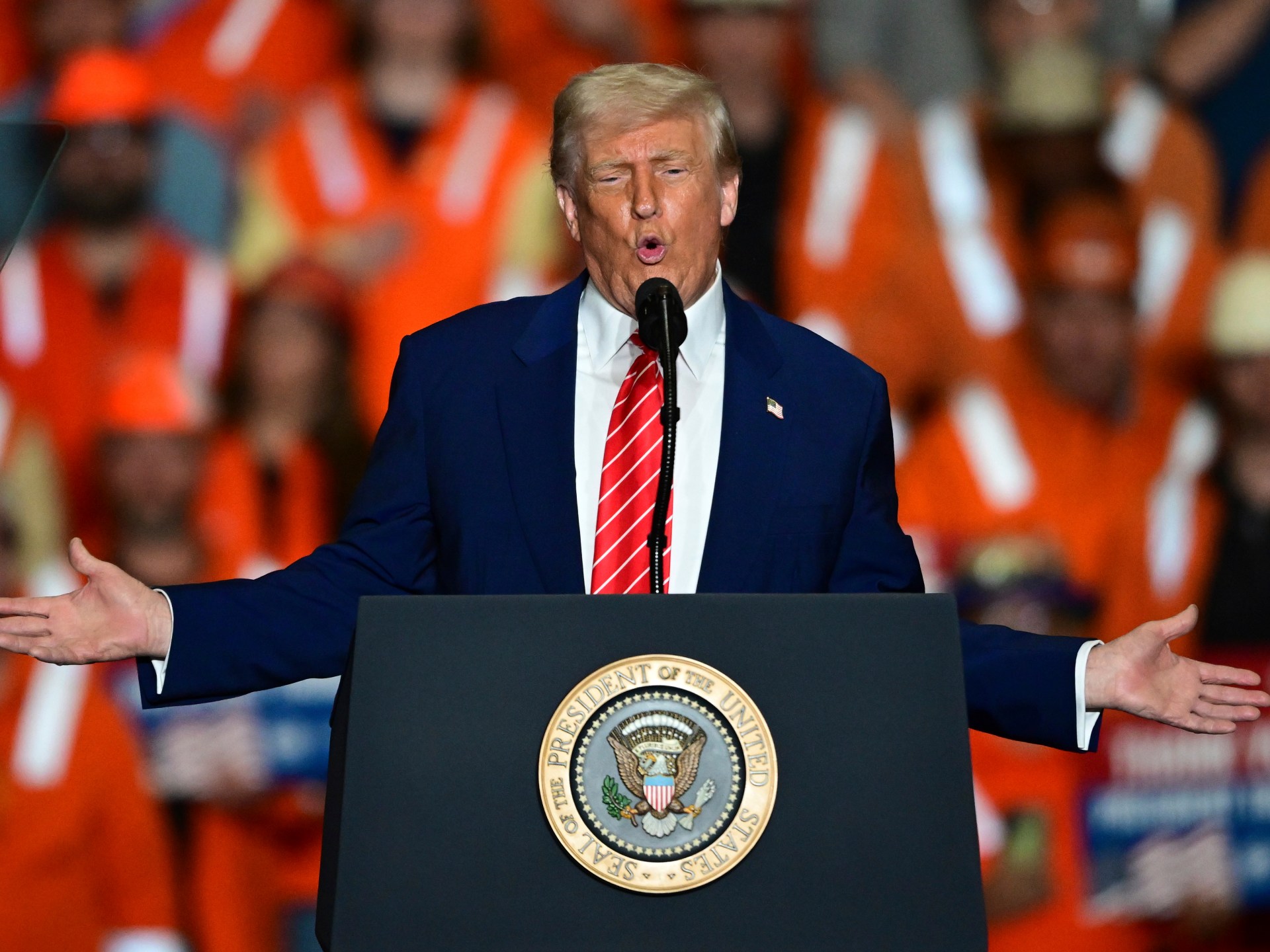Donald Trump, president of the United States, has announced that his administration will increase steel import tariffs from 25% to 50%.
Trump defended his most recent tariff increase as a benefit to the nation’s manufacturing sector when speaking to steelworkers and supporters at a rally outside Pittsburgh, Pennsylvania.
Trump told the audience that “we’re going to increase the steel tariffs in the United States of America from 25% to 50%, which will even more secure the steel industry there.” Nobody will maneuver around that, they say.
It is still unclear how the tariff increase will impact the United Kingdom’s earlier trade agreement with Canada and Mexico or the free-trade agreement there.
The nature of the agreement between US Steel, Japan’s largest steel producer, and Nippon Steel, left ambiguous. Trump continued to promote the two companies’ partnership as a “blockbuster agreement.”
Trump cited the agreement as saying, “There has never been a $14 billion investment in the history of the steel industry in the United States of America.”
Steel tariff increases
Trump and his team’s campaign events on Friday marked their return to the same location where they had previously held numerous election-season campaign events.
Trump’s campaign for reelection in 2024 based on a rally to working-class voters, including those in the Rust Belt, a manufacturing hub that has declined in response to changing industry trends and increased overseas competition.
The region’s key swing states, including Pennsylvania and Michigan, were there on election day, helping to win Trump’s second term.
Trump’s “America First” campaign is seen as a policy platform intended to support the nation’s manufacturing sector. Tariffs and other protectionist measures have been a key component of that agenda.
For instance, Trump announced a preliminary slate of 25-percent tariffs on steel and aluminum in March, prompting significant trading partners like Canada to take retaliatory measures.
He also imposed a blanket 10-percent tariff on nearly all of his trade partners the following month, as well as higher country-specific import taxes. The 10-percent tariff remained in place while those were quickly halted in the midst of widespread criticism and economic shockwaves.
Trump has argued that the tariffs are a crucial negotiation tool to sway more foreign investment into the US economy.
However, economists have warned that price increases will likely increase as a result of US consumers’ pressure being “hard reset” of the global economy, as well as significant tax increases like tariffs.
Given the sudden shifts in his policies, Rachel Ziemba, a senior fellow at the Center for a New American Security, said the most recent tariff increase on steel also indicates that negotiating trade deals with Trump may lead to “limited benefits.”
Additionally, she said, Friday’s announcement suggests that Trump is likely to continue to impose tariffs.
The issue is that, among other things, raising steel tariffs is bad for manufacturing and the energy sector. Overall, Ziemba explains that it is unfavorable to the US economy and adds uncertainty to the macro outlook.
Businesses, interest groups, and states have all filed lawsuits to stop the import tax increases, which Trump has also faced in the US.
For instance, on Thursday, a federal court briefly upheld Trump’s request to impose his extensive list of international tariffs before a short-lived appeals court abruptly paused that decision.
A partnership with Nippon Steel
The anticipated focus of Friday’s rally in Pittsburgh was on Nippon Steel’s proposed acquisition of US Steel, the second-largest steel producer in the nation, prior to the tariff increase’s announcement.
At the start of his speech, Trump stated, “We’re here today to celebrate a blockbuster agreement that will ensure this storied American company stays an American company.”
However, labor unions were largely against the merger between Nippon Steel and US Steel because it had been contentious.
Trump initially stated he would not support the acquisition when he returned to the White House in January, a similar position held by his predecessor, former US President Joe Biden.
He has since changed his mind and backed the agreement, though. He made an announcement last week that Nippon would only have “partial ownership” of US Steel.
Trump stated on Friday that the new agreement would give Nippon a “14 billion commitment to the future” of US Steel, but he would not provide specifics about how the ownership agreement would turn out.
Trump addressed the crowd of steelworkers, “Oh, you’re gonna be happy.” There is a lot of money in your path, the statement reads.
The Republican leader also poetically described the US’s history of steel, describing it as the engine that drives the nation’s economy.
He continued, “If you don’t have steel, you don’t have a country,” adding that the city of Pittsburgh used to produce more steel than most entire nations could.
For its part, US Steel hasn’t given investors any information about the revised deal. Meanwhile, Nippon hasn’t disclosed the terms of the agreement, despite a statement that supports the proposed “partnership.”
Despite being one of its principal opponents, the national United Steelworkers Union has been among the unionized workers affected by the acquisition.
The union questioned whether the new arrangement “makes any significant changes” from the initial proposal in a statement released prior to the rally.
In a statement citing firmer details that had not yet been made, the union said that “Nippon has consistently maintained that it would only invest in US Steel’s facilities if it owned the company outright.
“Over the past few days, there hasn’t been anything in the reporting that suggests Nippon has retreated from this position.”
Following a turbulent start to his second term, Trump has attempted to reassure his base of voters with the Friday rally.
Source: Aljazeera

Leave a Reply